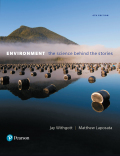
To enlist: The minimum two reasons that the natural primary forests contain more biodiversity than the single-species forestry plantations.
Answer to Problem 1TYC
The non-interference of humans in the old forests, diversity of trees in old forests, and the plantation of one type of trees in forests are the reasons for the more biodiversity in old primary forests.
Explanation of Solution
The forests are the ecosystems that are the home for the millions of organisms. The forests are the self-sustaining ecosystem that flourishes and expand on their own. The forests are the part of the biodiversity as being a part and also act as a habitat place for all other species residing in the forests.
The three reasons for the statement that the natural primary forests contain more biodiversity than the single-species forestry plantations are as follows:
(1) The old
(2) The diversity in the types of trees in the old primary forests has been proved to be the homes for the various other organisms and thus the old primary forests provide more habitat regions of the animals.
(3) The single species plants forests are the forests made for the plantation of the economically profitable trees. The interaction of animals or other organisms with these plants will be less than it was in the old primary forests. So, this will reduce the biodiversity of these types of forests.
Want to see more full solutions like this?
- Since the 1970s, the median age of people in North America has done what? Increased Decreased Stayed about the same Decreased dramaticallyarrow_forwardNorth America has experienced a demographic transition that resulted in what kind of changes in the population of North America? Lower birthrates, lower death rates, and longer life expectancies Higher birthrates, lower death rates, and longer life expectancies Lower birthrates, higher death rates, and shorter life expectancies Higher birthrates, higher death rates, and shorter life expectanciesarrow_forwardAccording to the views of animal rights activists opposed to animal experimentation which of the following statements applies? Animal experimentation should be permitted only when medical progress cannot be achieved in any other way. Animal experimentation should be permitted only when the animals involved come from a shelter where they were destined to be killed. Animals have the same rights and moral status that human beings do. We should not apply Kant's Practical Imperative to animals.arrow_forward
- 72 ic 18 The planets 1 Can you find eleven Solar System words in the grid? e E W b V e n a e P r r + h C i - PU 0 0 n c e t S c e r P W n P i t e r U 6 r f U n - K σ г m a r S n W e t Y g n d r e E C Y O P U S t a r > S a t U r n 2 Rearrange the letters into the names of the planets. a ucerr My c un Ves e hrtEa g sarM b ruepitj d rntSau f uneNtep_ h nasu Urarrow_forwardAnswer the photoarrow_forwardwhat are your thoughts on the critical importance of soil management and its impact on agricultural productivity and environmental health, and role of conservation tillage. write in first personarrow_forward
- Five arguments that the Water Bottle Bill was passed as a means of "revenue" enhancement In developing your arguments you should start at the website of the Connecticut State Library which contains the history of all legislation passed by the Connecticut Legislature http://ctstatelibrary.org/leghistory_ to gather the information for your arguments. use referencesarrow_forwardDescribe the importance of recycling household solid wastesarrow_forwardWhy is food waste a growing concern? Describe how some communities are addressing the food waste issue.arrow_forward
 Applications and Investigations in Earth Science ...Earth ScienceISBN:9780134746241Author:Edward J. Tarbuck, Frederick K. Lutgens, Dennis G. TasaPublisher:PEARSON
Applications and Investigations in Earth Science ...Earth ScienceISBN:9780134746241Author:Edward J. Tarbuck, Frederick K. Lutgens, Dennis G. TasaPublisher:PEARSON Exercises for Weather & Climate (9th Edition)Earth ScienceISBN:9780134041360Author:Greg CarbonePublisher:PEARSON
Exercises for Weather & Climate (9th Edition)Earth ScienceISBN:9780134041360Author:Greg CarbonePublisher:PEARSON Environmental ScienceEarth ScienceISBN:9781260153125Author:William P Cunningham Prof., Mary Ann Cunningham ProfessorPublisher:McGraw-Hill Education
Environmental ScienceEarth ScienceISBN:9781260153125Author:William P Cunningham Prof., Mary Ann Cunningham ProfessorPublisher:McGraw-Hill Education Earth Science (15th Edition)Earth ScienceISBN:9780134543536Author:Edward J. Tarbuck, Frederick K. Lutgens, Dennis G. TasaPublisher:PEARSON
Earth Science (15th Edition)Earth ScienceISBN:9780134543536Author:Edward J. Tarbuck, Frederick K. Lutgens, Dennis G. TasaPublisher:PEARSON Environmental Science (MindTap Course List)Earth ScienceISBN:9781337569613Author:G. Tyler Miller, Scott SpoolmanPublisher:Cengage Learning
Environmental Science (MindTap Course List)Earth ScienceISBN:9781337569613Author:G. Tyler Miller, Scott SpoolmanPublisher:Cengage Learning Physical GeologyEarth ScienceISBN:9781259916823Author:Plummer, Charles C., CARLSON, Diane H., Hammersley, LisaPublisher:Mcgraw-hill Education,
Physical GeologyEarth ScienceISBN:9781259916823Author:Plummer, Charles C., CARLSON, Diane H., Hammersley, LisaPublisher:Mcgraw-hill Education,





